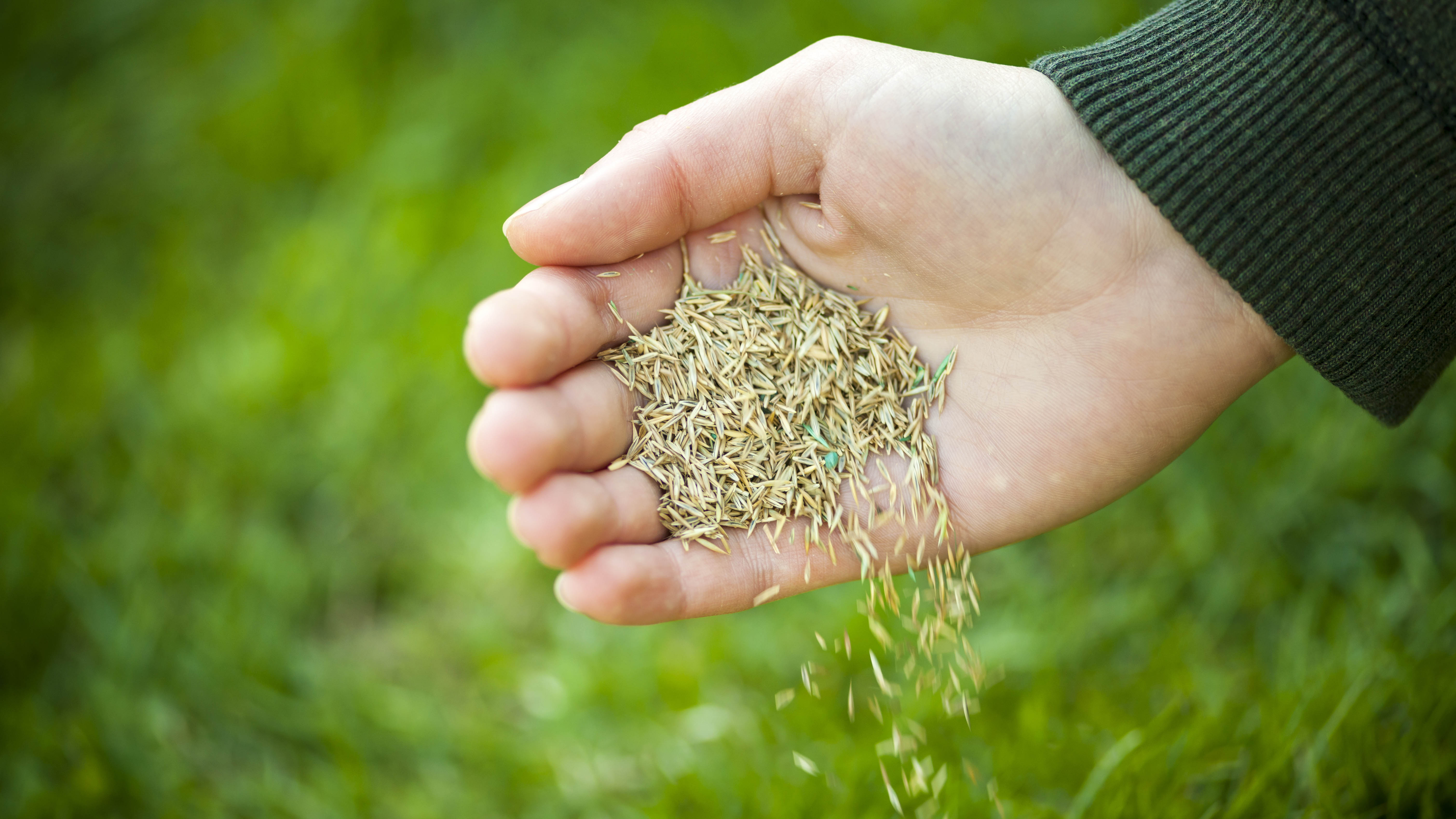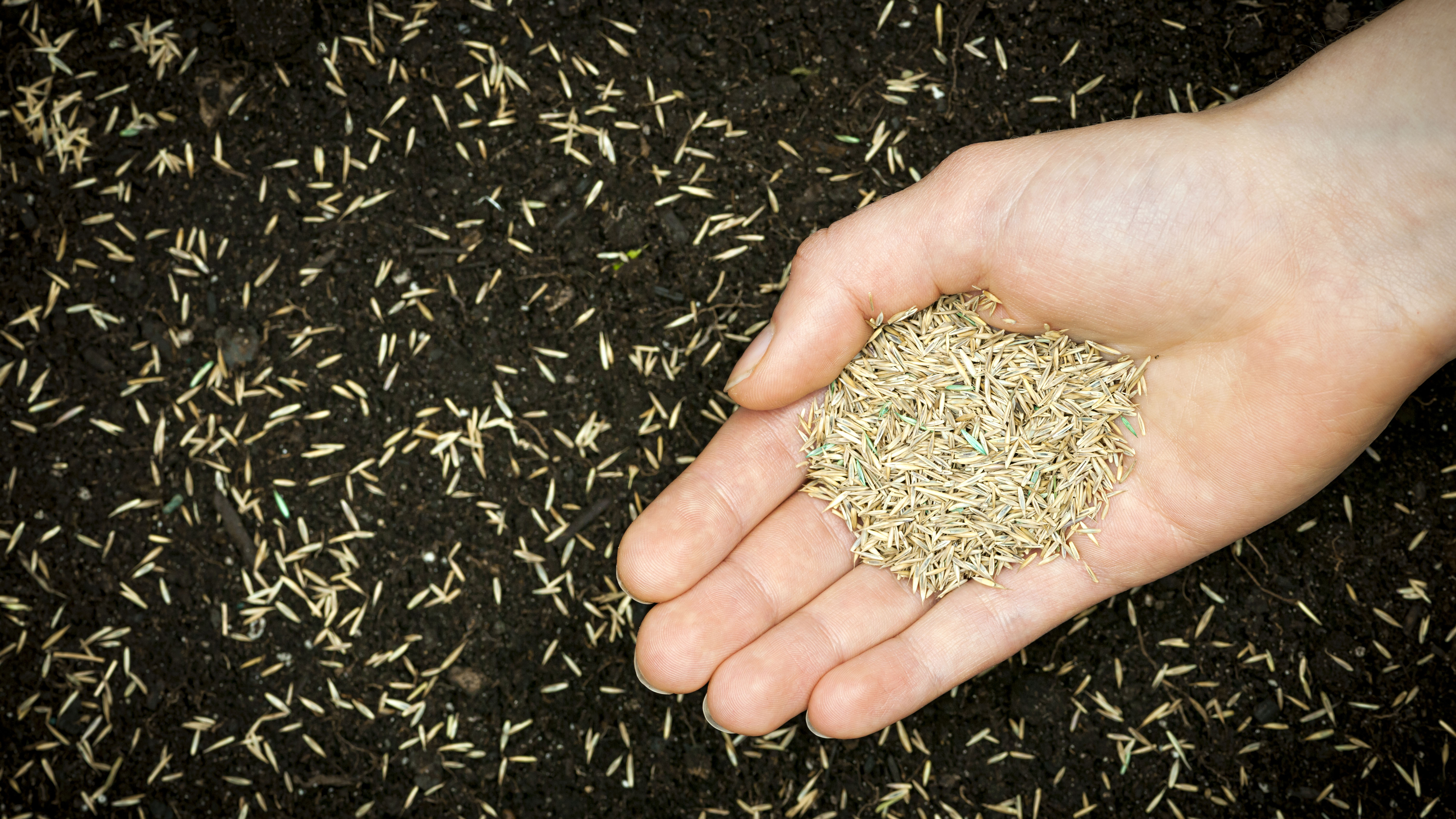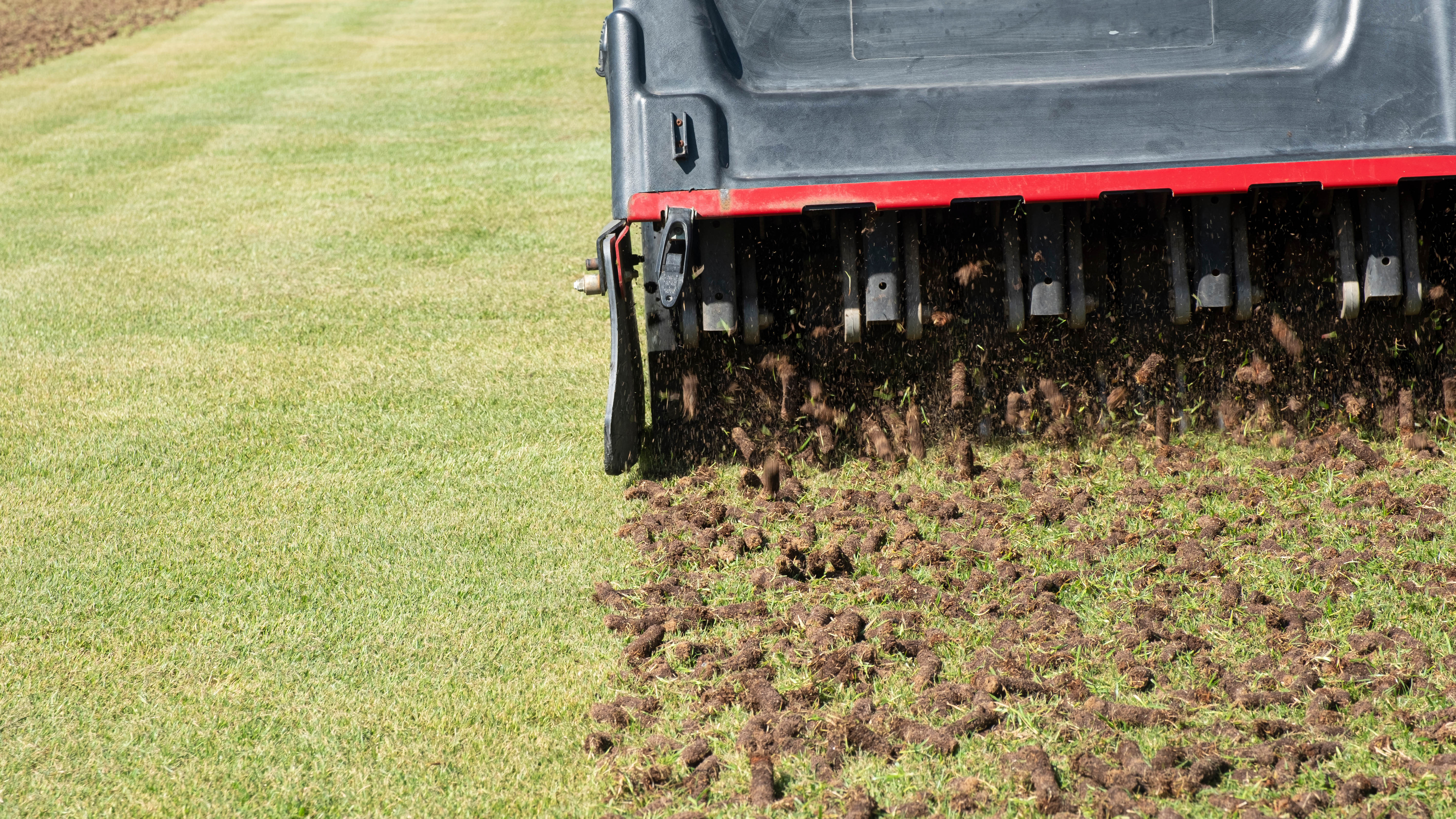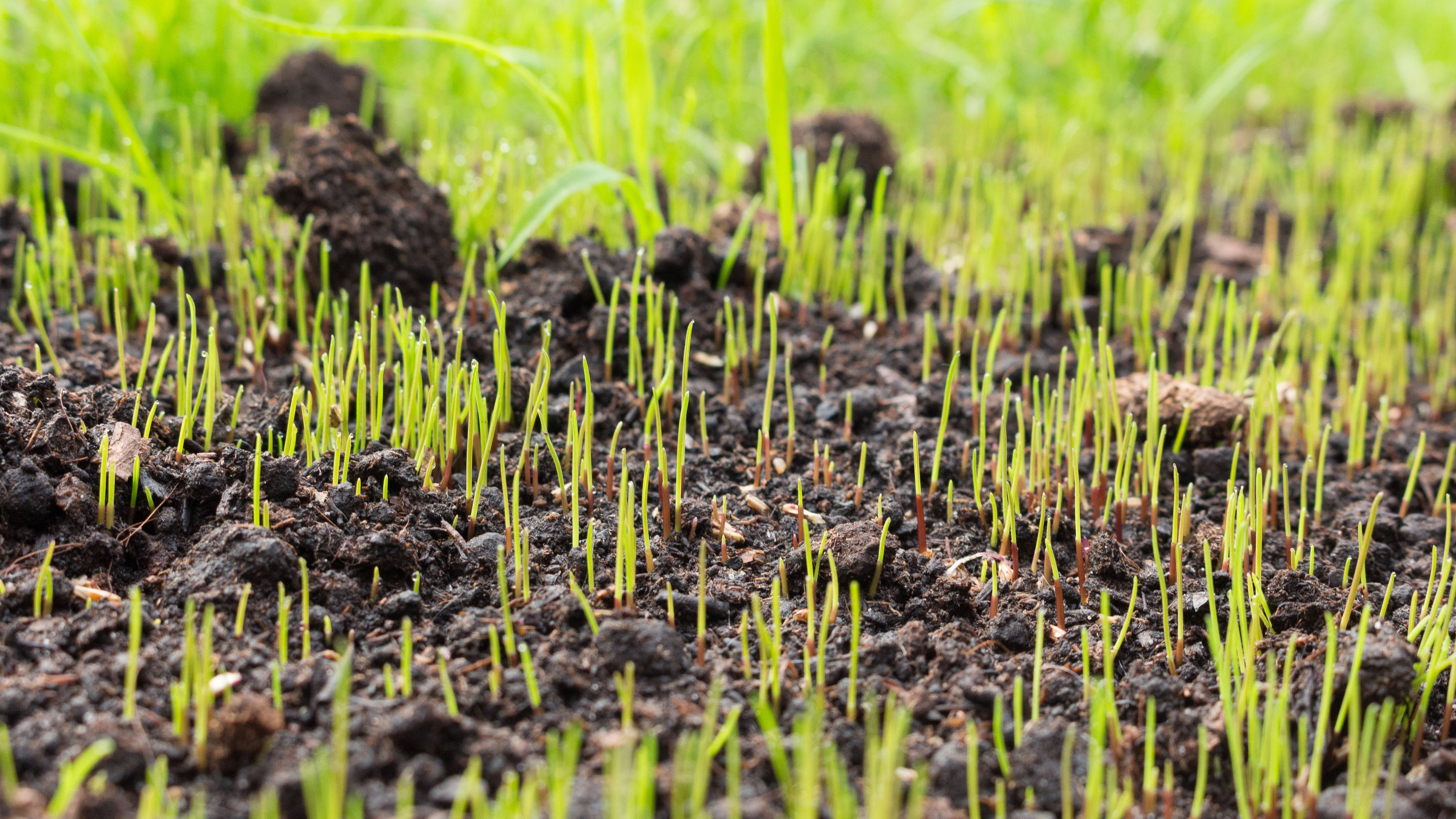How to overseed your lawn in the fall and when to do it
Here’s everything you need to know about overseeding your lawn

Fall is almost here, which means we can slow down the upkeep on our lawns. We don’t need to mow so often (here’s when you should stop mowing for the winter), or water the space as regularly. Having said that, your work’s not done yet.
Fall is a prime time for overseeding, which gives your grass a chance to bounce back from any damage taken over the summer. It’s ideal for filling in bare patches and priming your lawn in time for the winter; more small scale versus learning how to plant grass seed in full.
But, how should you overseed your yard and when is the best time to do it? Method and timing is everything when it comes to this chore. Get things right and you will be rewarded with a thick and complete lawn, but get things wrong and the frost can ruin your results and waste your efforts.
Here we will take you through how to overseed your lawn step-by-step, including when best to do it and why. So you can tackle this task with confidence.
For more advice, I just learned this quick tip to make reseeding your lawn much easier.
When should you overseed your lawn in the fall?
Overseeding is best done in the early fall, between mid August and early October — so there’s still time to repair your yard. The main event you want to avoid is the first frost as any seedlings will perish.
The type of grass seed you’re sewing can make a difference to the best soil conditions as well; cool-season grass, such as Kentucky bluegrass, prefers soil temperatures below 65°F, while warm-season grass, like Bermuda grass, prefers temperatures of at least 65°F.
Sign up to get the BEST of Tom's Guide direct to your inbox.
Get instant access to breaking news, the hottest reviews, great deals and helpful tips.
You can use a basic soil thermometer to check the conditions, such as the Urban Worm Soil Thermometer ($9, Amazon). Because of this, you are better-off overseeding warm-season grasses earlier in the year, from late spring to early summer.

While you might think what remains of the heat of summer will make for ideal growing conditions, don’t overseed at this time. Grass seeds are fragile and actually prefer moist conditions and lower temperatures to germinate. So, if you’re still facing the final stages of a drought, hold off on overseeding. Because of the moisture preference, overseeding is also best done a day or two after rainfall, but bear in mind you want the soil moist, not saturated.
It’s also good practice to overseed your lawn as soon as it’s been aerated. The better air circulation and access to nutrients in the soil gives grass seeds an improved chance of growth. Plus, if the seeds land in the puncture holes, they have a better chance of retaining moisture. See our guide on how to aerate a lawn for full instructions on this.

There should be fewer weeds at this time of year (another reason why overseeding is ideal in the fall), but you’ll want to remove any that remain before overseeding. The roots of weeds are strong and dominating — these will hog the nutrients in the soil, which will stunt the growth of your grass seedlings.
Check out our guides on how to get rid of dandelions and how to get rid of crabgrass for specific instructions. Be careful where any seed heads have developed on weeds prior to removal; if these disperse on removal you could have more weeds crop up next season. We recommend Grandpa’s Weeder for everyday weeding ($39, Amazon). Take care if you plan to use any herbicides as these can often kill grass seeds; always read the label to be sure.
How to overseed a lawn
1. Choose the right grass seed — Before anything else, make sure you’re planting the correct type of grass seed to match the rest of your lawn. Cool-season grasses are often found in the north, while warm-season grass frequents the south. If in doubt, consult an expert at your local home department store.
2. Mow your lawn — When it comes to overseeding, the first step is to mow your lawn to a low height. Cut it down to about 1.5-2 inches in length. Here are 9 signs that you’re cutting your grass too short.
3. Rake the dead grass — Take a rake to your lawn afterwards to remove any dead grass. You might think this is making things look worse, but this clears the area for the seeds to reach the soil.
4. Check your soil — Check the conditions of your soil using a soil test and add amendments as necessary to improve it's habitability. We recommend the Luster Leaf 1602 Soil Test Kit ($15, Amazon).

5. Aerate the lawn — Now you want to aerate the lawn where you plan to spread the grass seed. This gives the soil a new lease of life. It will loosen up and rotate the soil, allowing for better air circulation and nutrients, so it’s an important step.
6. Overseed — Apply the grass seed by hand or using a spreader to areas where you want fresh growth. Make sure you follow the dosage instructions according to the label. If you aerated your lawn, aim to spread the seeds via the holes left behind. We recommend the Scotts Turf Builder EdgeGuard Mini Broadcast Spreader ($44, Amazon).
7. Apply fertilizer — Now your grass seeds are in place, you will need to give them all the help they can get and that includes fertilizer. Apply a fertilizer designed to aid the growth of young grass, such as Scotts Turf Builder Starter Food for New Grass ($29, Amazon).

8. Water regularly — When grass is young, it is fragile, and it will require constant moisture to aid its growth. The soil will need to be watered 1-2 times a day to start, although keep in mind you want conditions moist, not saturated. It can take from 1-3 weeks for grass seeds to germinate, so be patient and continue to tend to them. Once the grass reaches 1-2 inches in height, you can scale back how often you water it.
How often should you overseed the lawn?
This comes down to what kind of summer you’ve had. If heatwaves and droughts have been a frequent occurrence, damaging your lawn and leaving it exposed to weeds, repairs and overseeding will be needed annually. However, in most circumstances, with standard summer temperatures, overseeding will only be needed every few years.
If you’re ever unsure, just check the conditions of your lawn once summer is over. If it looks thin, with bare patches of soil here and there, overseeding can improve things.
Top tips when overseeding a lawn
- Once your grass seed has been scattered, cover it over with a thin layer of mulch or compost to protect it from high winds as well as any birds.
- If heavy rain is scheduled, hold off on overseeding, otherwise this can wash your work away.
- Once you’ve mowed your lawn, leave the grass clippings where they lie to naturally decompose and fertilize it. This is one of the 9 ways you can reuse grass clippings after mowing.
- Take care not to overwater while the grass is young. This can lead to root rot where the roots are overexposed to moisture. Always check conditions prior to watering.
- Only scatter grass seed by hand in small spaces. For larger areas a dedicated spreader is recommended to guarantee an even application.
More from Tom's Guide

Katie Mortram used to be a Homes Editor for Tom's Guide, where she oversaw everything from kitchen appliances to gardening tools, as well as smart home tech. Specializing in providing expert advice for cleaning and home manintenance, she now works as Household Advice Editor for Good Housekeeping.
-
Flatline302 Reply
If your in the North East it's already too late. This article should have posted a month ago. Giving people the opportunity to plan and get done before frost. Temps are dropping rapidly. I overseeded two weeks ago and it's already looking like I was too late as well.admin said:Looking to overseed your lawn this fall? Here, we cover what you need to do as well as when, so you can get the best results.
How to overseed your lawn in the fall and when to do it : Read more
